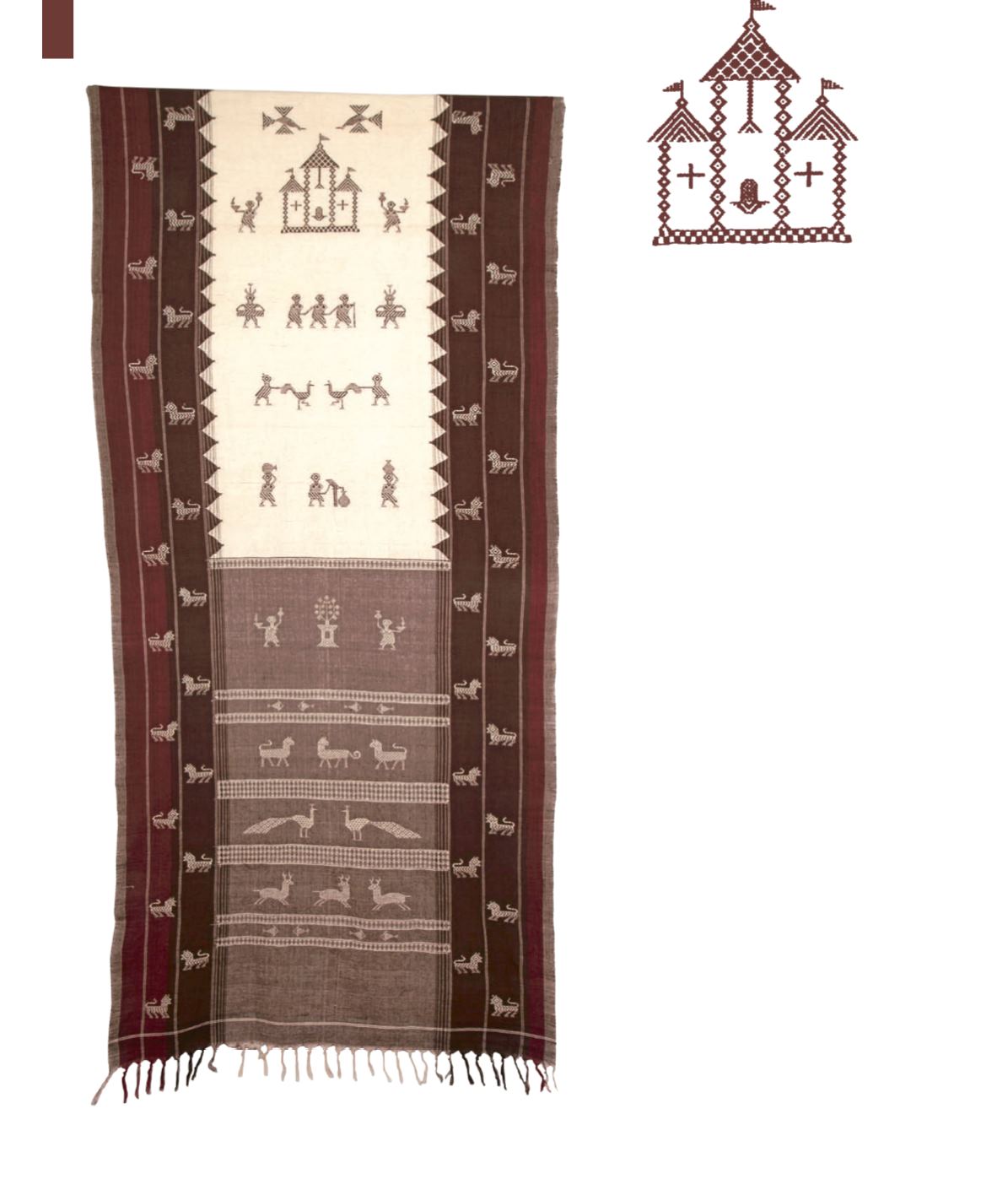
112
Childhood Memories
I grew up observing all the activities related to
handloom weaving the naturally-dyed yarn. I
also saw how the yarn was bought and how the
woven textiles were sold in the weekly market.
For purchasing yarn and the roots of the
aal
tree the family had to borrow money. We would
go walking barefoot to the weekly market in
Jagdalpur where products would be exchanged
for other products or money. We would sell
our woven textiles there and then repay those
who had lent us money for buying yarn and the
roots. Even as a child, I noticed that the tribals
who bought our woven textiles examined them
carefully as they always wanted textiles that had
beautiful colours, were neatly woven and would
last long. With all the hardships of handloom
weaving, it was a difficult life for my family and
me.
When I was in the eighth class, I started assisting
my family members in the natural dyeing process
and slowly also learnt different activities related
to weaving such as setting the warp yarns on
the loom, the different counts of yarn as well as
of the weave, and how the motifs and patterns
would be woven. I slowly started dyeing yarn and
weaving in the tradition of my forefathers and
began to enjoy the process very much.
The Breakthrough
Our first break came around 1990 when there
was a Palishree Mela organised in Bhubaneswar.
Sir Mohanty Babu, an officer of DC Handicrafts,
offered us the first chance to participate in the
mela. By God’s grace we happened to meet with
Rabi Sahoo, son of renowned stone sculptor
SudarshanSahoowholatersentaletterto
ParamparikKarigarforourparticipationintheir
exhibition. And with that a new chapter of our
lives began.


